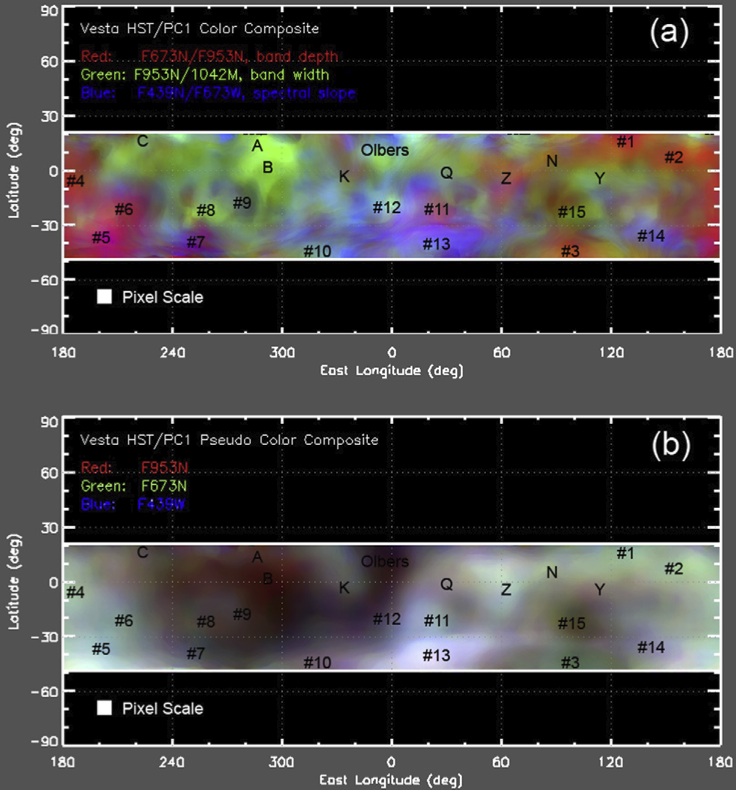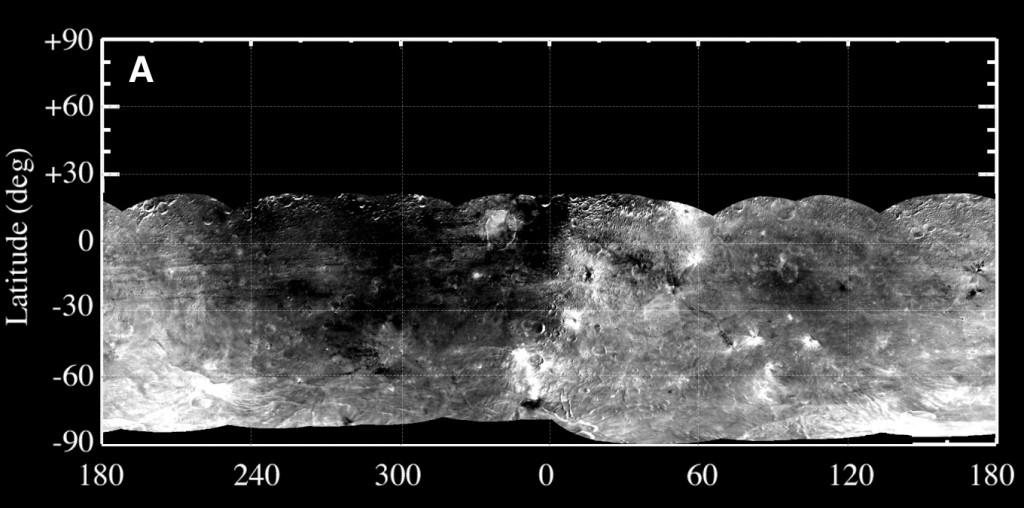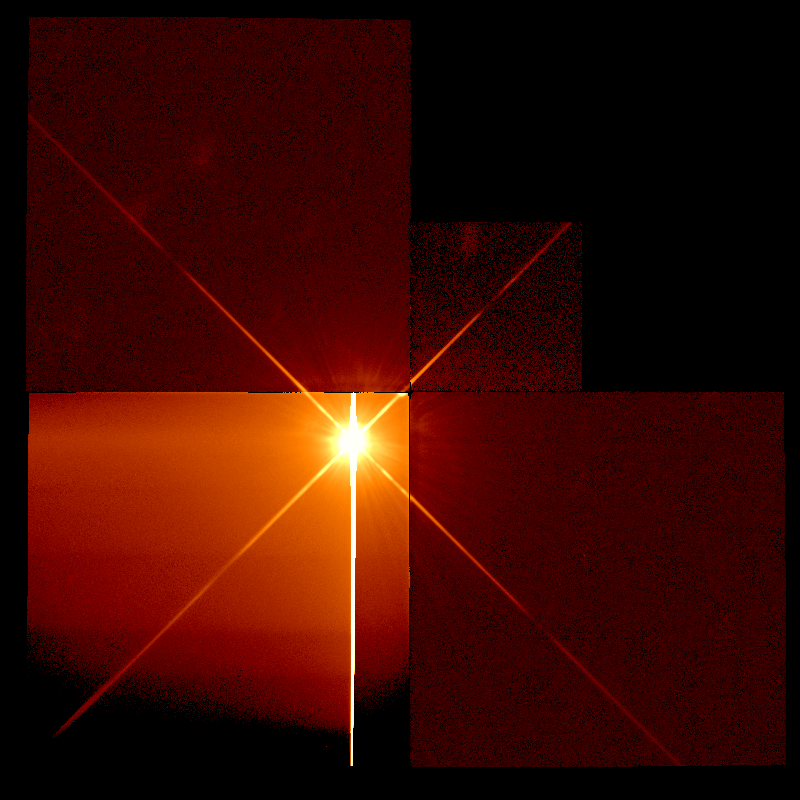Ancient asteroid Vesta
NASA’s Dawn spacecraft was in orbit around Vesta from August, 2011 to September 2012, and mapped this asteroid for a whole year before it set route to Ceres.
Vesta is the second or third largest asteroid in the main asteroid belt, and the brightest asteroid as seen from the Earth. Some times it is even visible without using a telescope of a binocular at its brightest if you can find a patch of dark sky without the pollution from the modern time city light.
We study Vesta because it is an ancient body in the solar system. Just like fossils to archeologists, Vesta retains a tremendous amount of records that were accumulated from the time Earth formed to the current. From those records, we try to understand how Earth formed and evolved to its present day environment that all terrestrial life entirely relies on, and what might happen to it in the future that will affect the fate of life and human beings.
I’m deeply involved in studying Vesta since joined the Dawn mission, first as a Dawn Associate working with a mission co-investigator, Dr. Lucy McFadden, then as a Participating Scientist for the Vesta phase.
Surface mapping
Researchers knew that Vesta the brightness of Vesta changes periodically as it rotates almost 100 years ago, but didn’t know whether it is the possibly irregular shape or compositional diversity that causes this change. Until 1970s, it was slowly recognized that it is the bright and dark patches that caused the change of its brightness, rather than shape. But no telescope can resolve its small surface except for the Hubble Space Telescope. From the Hubble images collected in 1994, the surface of Vesta as mapped out for the first time. Those maps were focused on the northern hemisphere of Vesta, because at that time, the north pole is tilted towards us. We observed Vesta again in 2007 when its south pole is tilted towards us, and generated maps focused on the southern hemisphere, where the huge impact basin, now named Rheasilvia, exists.

Two maps of Vesta, displayed in different color schemes. The top panel is a color composite to highlight the mineralogical diversity on Vesta. The bottom panel is a color composite more close to, but exaggerated, what human eyes will see the surface of Vesta. The letters and numbers mark the compositional units we identified. Taken from Li et al. (2010).
From these maps, we were able to study the compositional change on Vesta, and generated extremely useful input to Dawn mission for planning its rendezvous with this asteroid.
Our results are reported in an article in Icarus:
Li, Jian-Yang, McFadden, L.A., Thomas, P.C., Mutchler, M., Parker, J.Wm., Young, E.F., Russell, C.T., Sykes, M.V., Schmidt, B., 2010. Photometric Mapping of the Southern Hemisphere of Asteroid (4) Vesta from HST. Icarus 208, 238-251.
Dawn surface mapping
Orbiting around Vesta at distances down to about 250 km from the surface, Dawn camera and mapping spectrometer were able to generate many different kinds of maps at a resolution more than 1000 times higher than those produced from Hubble images. Below is a surface reflectance map of Vesta produced when Dawn is still 6000 km from Vesta, already showing much find details that Hubble could not resolve.

The reflectance map of Vesta produced from Dawn data taken when it was about 6000 km away from Vesta. Taken from Reddy et al. (2013).
Careful comparisons shows that for almost all the bright and dark and color patches identified in the Hubble map, we were able to find the corresponding regions in the Dawn map. And from the Dawn map, we see a lot more amazing details that only Dawn could see. The reality check by Dawn confirms that our methodology of studying the huge number of asteroids with ground-based telescopes and Hubble is accurate, albeit under the limit of spatial resolution. Yet, the observations performed by Dawn from close distances are unprecedented and reveals great detail that is otherwise impossible to know.
Read more from our journal article in Icarus:
Reddy, V., Li, J.-Y., et al., 2013. Comparing Dawn, Hubble Space Telescope, and ground-based interpretations of (4) Vesta. Icarus 226, 1103-1114. arXiv: 1307.6608.
Dawn returned about 40,000 images and millions of spectra. It will take at least another ten years before we fully analyze these data.
Satellite search
Vesta’s surface is full of scars created by continuous impacts from other much smaller rocks orbiting the Sun near it, ever since its birth. The largest of the scars are the Rheasilvia basin and the partially overlapping but older Veneneia basin, both near the south pole. The sizes of them are nearly comparable to the size of Vesta itself. Theoretical work demonstrated that impact is an efficient way to create satellites around an asteroid. Does Vesta has any satellite?
We started the search from our observations with Hubble in 2007, continued with another observations in 2010, complemented with ground-based telescopes in Palomar Observatory, and finished up with Dawn spacecraft on its way to Vesta. Nothing was spotted. Our search is so sensitive to small satellite around Vesta. We believe that, prior to Dawn’s search, we could see any rock orbiting Vesta that is 22 m in radius or larger, assuming it is a similar kind of rock as Vesta.

The very long exposure of Vesta taken by Hubble Space Telescope in 2007. Vesta is saturated in the lower-left quadrant.
The final analysis of the Dawn satellite search image is still ongoing. But it seems pretty conclusive that nothing is orbiting Vesta. While it is not necessarily a surprise, since impact doesn’t guarantee to form a satellite, it is a bit regretful because, well, we like discoveries!
Read more from our journal article in Icarus:
McFadden, L.A., Bastien, F.A., Mutchler, M., Crow, C., Heather, W., Li, J.-Y., Hamilton, D.P., 2012. Upper limits on the size of satellites of Asteroid (4) Vesta from 2007 Hubble Space Telescope observations. Icarus 220, 305-310.